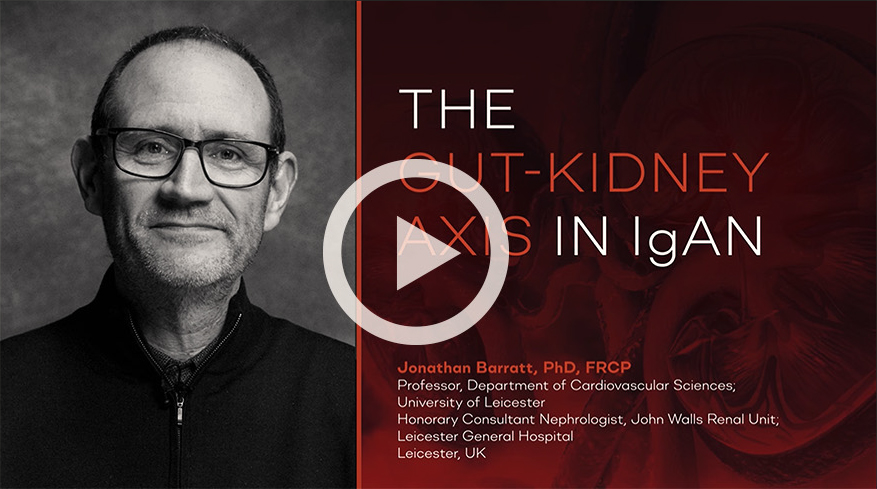IgA NEPHROPATHY MOD VIDEO
There may be a hidden culprit in IgA Nephropathy: the gut
IgA Nephropathy is thought to primarily originate in the ileum.1
See the role the gut plays in IgA Nephropathy
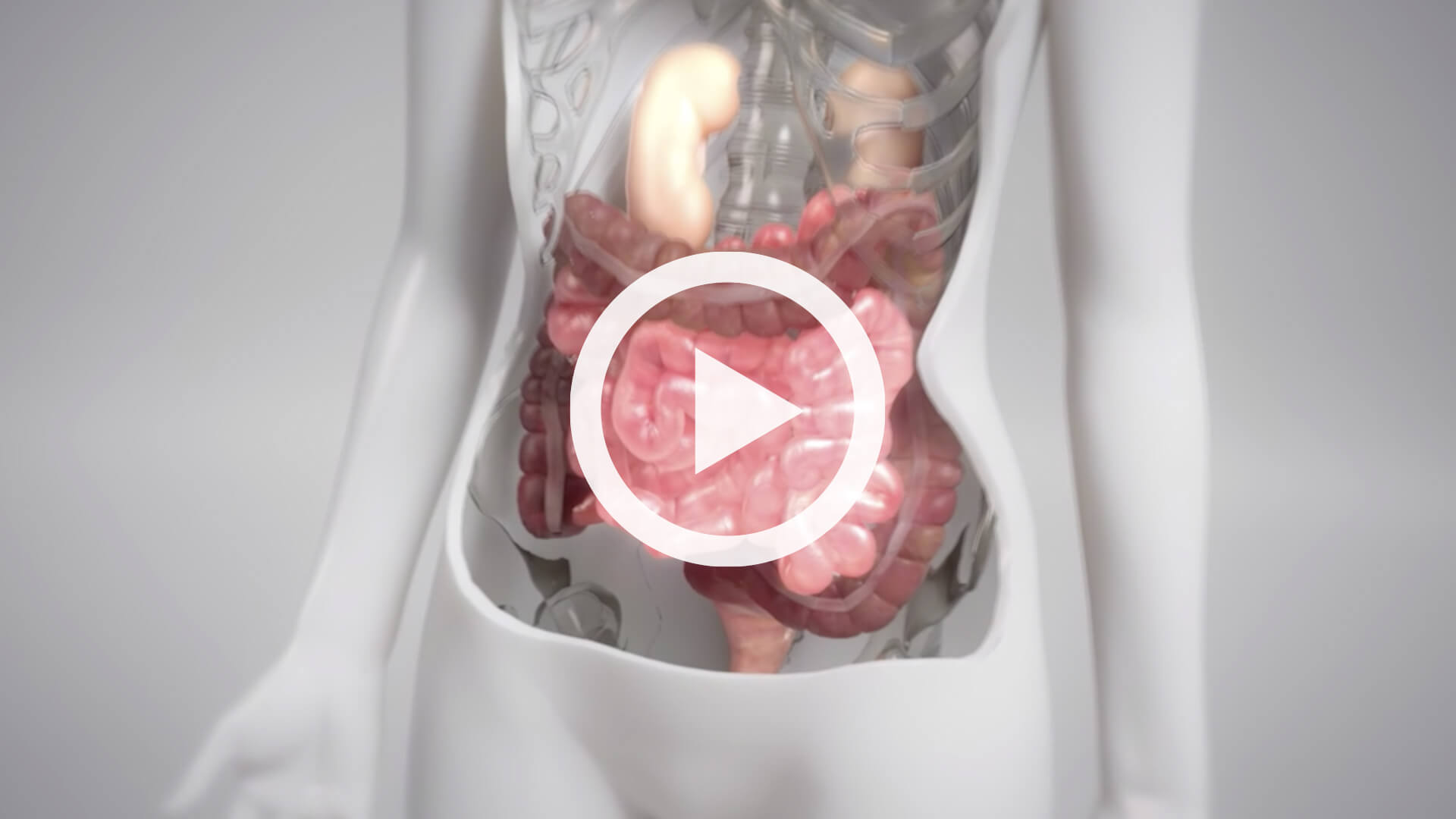
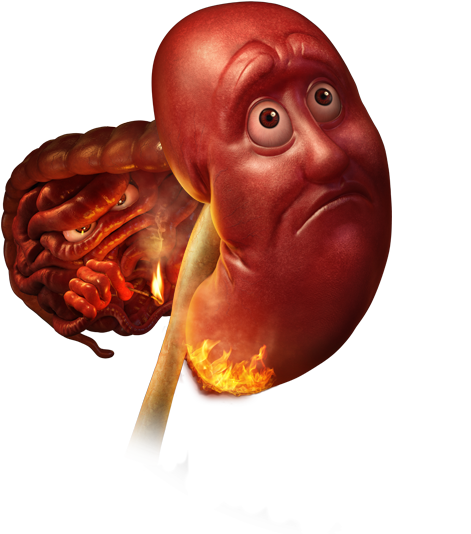
~33%
of patients with IgA Nephropathy will experience recurrence of the disease after kidney transplantation, indicating that the source of disease is extrarenal in origin.14,15
IgA NEPHROPATHY MECHANISM OF DISEASE
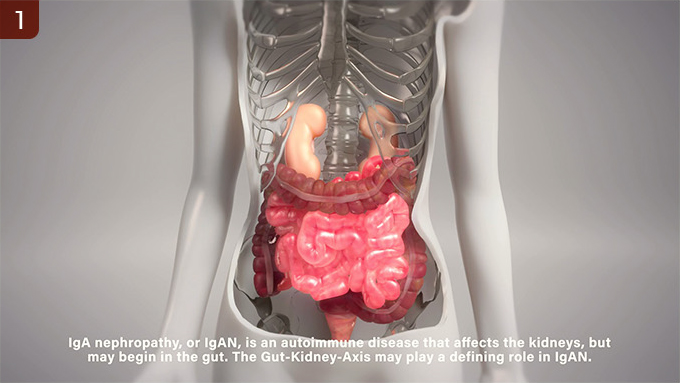
IgA Nephropathy, or IgAN, is an autoimmune disease that affects the kidneys, but may begin in the gut. The Gut-Kidney-Axis may play a defining role in IgAN.1,16
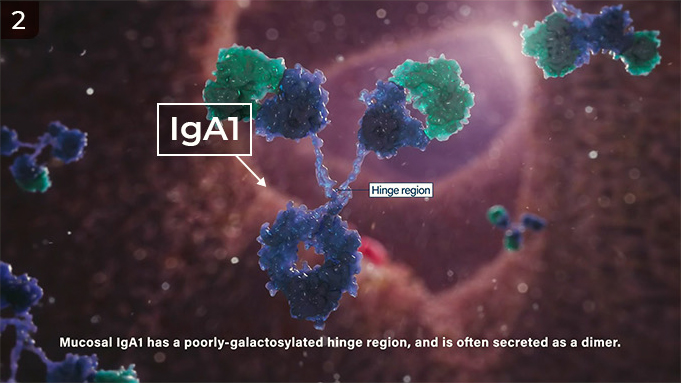
Mucosal IgA1 has a poorly-galactosylated hinge region, and is often secreted as a dimer.1,17
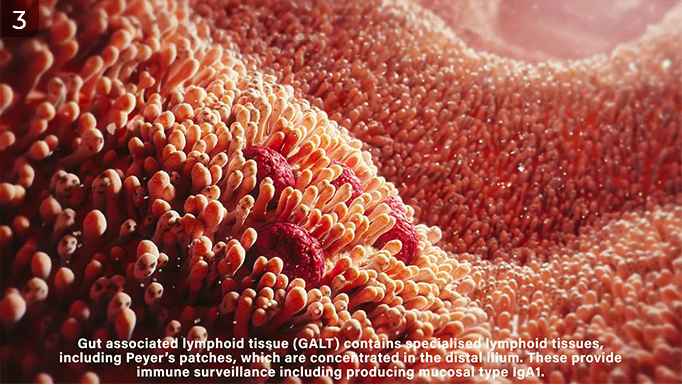
Gut associated lymphoid tissue (GALT) contains specialised lymphoid tissues, including Peyer's patches, which are concentrated in the distal ileum. These provide immune surveillance, including producing mucosal type IgA1.1,18
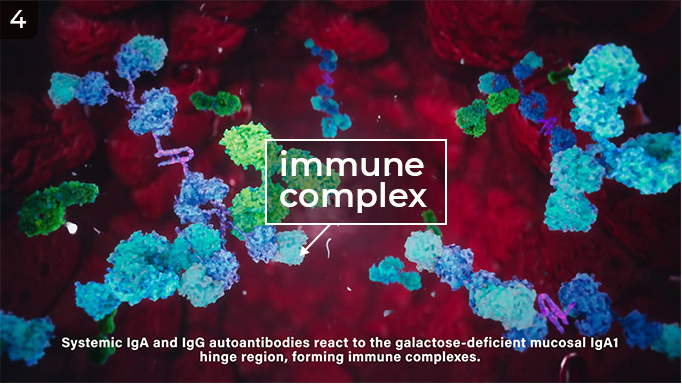
Systemic IgA and IgG autoantibodies react to the galactose-deficient mucosal IgA1 hinge region, forming immune complexes.17,19
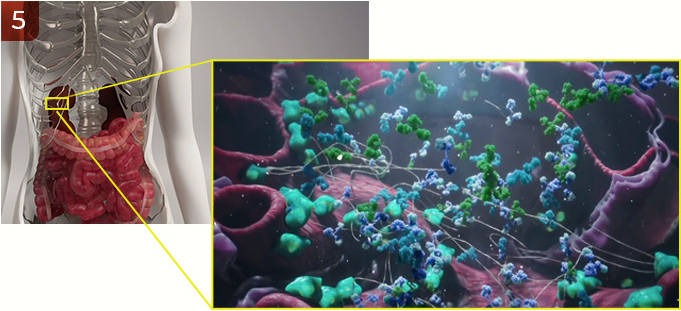
The circulating complexes deposit in the kidney glomerular mesangium, where they become trapped and mucosal IgA binds to extracellular matric components.17,20
This autoimmune response leads to glomerular and tubulo-interstitial injury, resulting in proteinuria and a progressive decline in renal function.21
Sign up to be the first to receive all the latest IgA Nephropathy news and updates
Stay connected with Calliditas.


